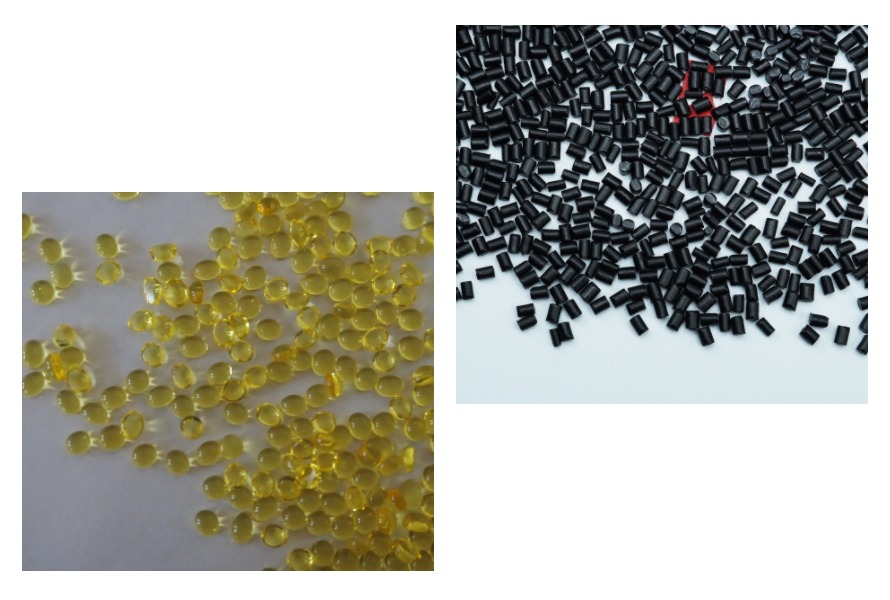Polyamid vs. nylon
Polyamid a nylon, dvě stálice v oblasti syntetických polymerů, jsou pilíři moderních průmyslových inovací. Ačkoli mají tyto materiály společné amidové spojení, liší se ve svém chemickém složení a vlastnostech a nabízejí jedinečné výhody napříč spektrem aplikací. Cesta polyamidu a nylonu od jejich vzniku až po jejich široké uplatnění ve spotřebních výrobcích podtrhuje jejich nepostradatelnost v různých průmyslových odvětvích.
Polyamid: bližší pohled
Polyamidy, které se vyznačují amidovými vazbami, se skládají z opakujících se jednotek spojených do řetězců. Tyto řetězce neboli monomery se liší v závislosti na konkrétním typu polyamidu, který může být přírodní nebo syntetický. Polyamidy jsou proslulé svými vysokými provozními teplotami a odolností vůči rozpouštědlům a vykazují působivé mechanické vlastnosti, včetně vysokého modulu pružnosti, odolnosti proti nárazu a nízkých koeficientů tření. Zejména nylon vyniká jako nejrozšířenější varianta polyamidu.
Pochopení chemického složení polyamidu
Přítomnost polárních skupin v polyamidech podporuje vodíkovou vazbu mezi řetězci, čímž zvyšuje přitažlivost mezi řetězci a tím i mechanickou pevnost materiálu. Zajímavé je, že délka uhlovodíkové páteře významně ovlivňuje vlastnosti polyamidových materiálů, přičemž delší řetězce korelují se sníženou pevností a tuhostí. Polarita amidové skupiny však činí polyamidy náchylné k poškození polárními rozpouštědly, zejména vodou.
Ponoření do Nylon
Nylon, syntetický polyamid, vzniká kondenzační polymerací, při níž se monomery uhlíku a vodíku spojují za vzniku řetězců s amidovými skupinami. Tato syntéza zahrnuje nárůstovou polymerační reakci mezi dikarboxylovou kyselinou a diaminem, jejímž výsledkem je vznik nylonu. Nylonová vlákna, která vykazují pozoruhodnou trvanlivost, vodoodpudivost, pružnost a odolnost vůči olejům a různým chemikáliím, jsou všestranná a nacházejí uplatnění v různých průmyslových odvětvích.
Identifikace společných znaků
Polyamidy i nylon mají několik společných vlastností:
- Amidová vazba:Oba se vyznačují přítomností amidových vazeb ve své molekulární struktuře.
- Spotřebitelské aplikace:Obě se hojně používají ve spotřebních výrobcích.
- Mechanická tuhost:Díky své výjimečné tuhosti jsou vhodné pro aplikace vyžadující, aby materiály odolávaly značnému namáhání nebo nárazům.
- Odolnost proti opotřebení a nárazu:Polyamidy a nylon jsou proslulé svou odolností proti opotřebení a nárazu a jsou preferovanou volbou pro aplikace, kde dochází k neustálému tření a kontaktu s tvrdými povrchy.
- Odolnost proti vodě:Oba materiály jsou odolné vůči vodě, ale nylon má ve srovnání s ostatními polyamidy tendenci absorbovat více vlhkosti.
- Body tání:Teploty tání různých polyamidů a nylonů se liší v závislosti na jejich chemickém složení.
- Vysoká pevnost:Oba materiály vykazují vysokou pevnost, což zvyšuje jejich vhodnost pro náročné aplikace.
- Chemická odolnost:Polyamidy a nylon vykazují odolnost vůči různým chemikáliím, což přispívá k jejich dlouhé životnosti a univerzálnosti v náročných prostředích.
- Rozměrová stabilita:Zachovávají si svůj tvar a rozměry i při různých teplotních a vlhkostních podmínkách, což zajišťuje jejich stálý výkon v různých prostředích.
- Elektrická izolace:Oba materiály mají vynikající elektroizolační vlastnosti, takže jsou cenné v aplikacích vyžadujících ochranu před elektrickým proudem.
Rozdíly mezi polyamidem a nylonem
Podmínky zahrnují | Polyamid | Nylon |
Definice | Jedná se o typ polymeru, který vzniká spojením aminoskupiny z jedné molekuly se skupinou kyseliny karboxylové z jiné molekuly a používá se k výrobě mnoha syntetických vláken, například nylonu. | Jedná se o termoplastické polyamidové polymery, což je třída mimořádně odolných syntetických materiálů, které se většinou používají ve vláknech. |
Typy | Dále se dělí na alifatické, aromatické a poloaromatické. | Jedná se o poloaromatický polyamid, který se dále dělí do dalších různých kategorií. |
Odolnost proti oděru | Liší se v závislosti na typu polyamidu. | Mají vysokou odolnost proti oděru. |
Tření | Liší se v závislosti na typu polyamidu. | Mají nízký koeficient tření. |
Typy polymerů | Může být syntetický i přírodní. | Jedná se o syntetický polymer. |
Chemická struktura | Záleží na specifickém uspořádání monomerů na jejich molekulách. | Je vysoce polární a symetrický. |
Absorpce vlhkosti | Záleží na typu polyamidu. | Má vysokou schopnost absorbovat vlhkost. |
Síla | Ostatní polyamidy jsou méně odolné než nylon, protože polyamid má nižší teplotu tání a je méně odolný vůči namáhání při zátěži. | Díky vysokému bodu tání jsou pevnější než polyamid, což umožňuje jejich natažení na maximální délku bez porušení. |
Mechanické vlastnosti | Liší se v závislosti na typu polyamidu. | Má vysoký modul pružnosti, který ovlivňuje jeho mechanické vlastnosti. |
Chemická odolnost | Polyamidy mají různou odolnost vůči chemikáliím v závislosti na jejich specifickém složení. | Nylon vykazuje vynikající odolnost vůči chemikáliím, což zvyšuje jeho trvanlivost v drsném prostředí. |
Výrobní proces | Výroba polyamidů zahrnuje různé metody, včetně kondenzační polymerace a polymerace s otevíráním kruhu. | Nylon se obvykle vyrábí procesem známým jako taveninové zvlákňování, při kterém se polymer roztaví a protlačí spinnerem, aby se vytvořila vlákna. |
Závěr
V neustále se vyvíjejícím prostředí materiálové vědy a průmyslových inovací jsou polyamid a nylon stálicemi, které slibují další růst a přizpůsobování. S rozvojem technologií a vznikem nových aplikací budou výrazné vlastnosti těchto syntetických polymerů i nadále hnací silou pokroku v různých odvětvích. Ať už se jedná o textil, automobilové díly nebo spotřební zboží, trvalé dědictví polyamidu a nylonu zajišťuje jejich místo v čele moderního průmyslu a utváří svět, který obýváme dnes i zítra.

